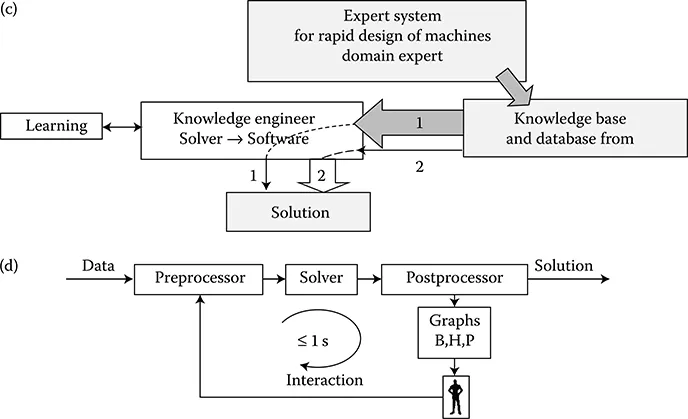
Engineering Electrodynamics
Electric Machine, Transformer, and Power Equipment Design
Janusz Turowski, Marek Turowski
- 568 pagine
- English
- ePUB (disponibile sull'app)
- Disponibile su iOS e Android
Engineering Electrodynamics
Electric Machine, Transformer, and Power Equipment Design
Janusz Turowski, Marek Turowski
Informazioni sul libro
Due to a huge concentration of electromagnetic fields and eddy currents, large power equipment and systems are prone to crushing forces, overheating, and overloading. Luckily, power failures due to disturbances like these can be predicted and/or prevented.
Based on the success of internationally acclaimed computer programs, such as the authors' own RNM-3D, Engineering Electrodynamics: Electric Machine, Transformer, and Power Equipment Design explains how to implement industry-proven modeling and design techniques to solve complex electromagnetic phenomena. Considering recent progress in magnetic and superconducting materials as well as modern methods of mechatronics and computer science, this theory- and application-driven book:
- Analyzes materials structure and 3D fields, taking into account magnetic and thermal nonlinearities
- Supplies necessary physical insight for the creation of electromagnetic and electromechanical high power equipment models
- Describes parameters for electromagnetic calculation of the structural parts of transformers, electric machines, apparatuses, and other electrical equipment
- Covers power frequency 50-60 Hz (worldwide and US) equipment applications
- Includes examples, case studies, and homework problems
-
Engineering Electrodynamics: Electric Machine, Transformer, and Power Equipment Design provides engineers, students, and academia with a thorough understanding of the physics, principles, modeling, and design of contemporary industrial devices.
Domande frequenti
Informazioni
1 Methods of Investigation and Constructional Materials
1.1 Methods of Investigations
- Formulating mathematical equations and finding a function, which describes the electromagnetic field and its properties in the investigated region, considering the constant or variable characteristics of media (air, copper, steel, etc.) in this region
- Determining the limiting conditions, that is, boundary conditions and initial conditions on the surface of the investigated region, imposed by the type and configuration of sources in the investigated field (configuration of conductors, coils or magnetic cores, type of current, etc.) and the border surfaces of adjacent media
- Selecting constants and parameters of equations in such a way that satisfies the boundary and initial conditions, that is, finding a final mathematical solution
- Experimental verification of the assumptions, adequacy of a computation models, intermediate simplifications, and final results
- Demonstrating the obtained results in a form of simple formulae, user-friendly programs, tables, and/or diagrams, facilitating optimal use of the results of the object being investigated


- Interactive methods of design, which are a higher-level and faster trial-and-error method [1.20]
- CAD and Auto-CAD (computer-aided design), mainly for design and graphics
- CAM (computer-aided manufacturing) systems, to assist the production process
- CAE (computer-aided engineering), which is a combination of the systems mentioned above, where a physical model (prototype) is substituted by a computer model and its characteristics are evaluated and improved by the computer simulation, including the manufacturing process itself